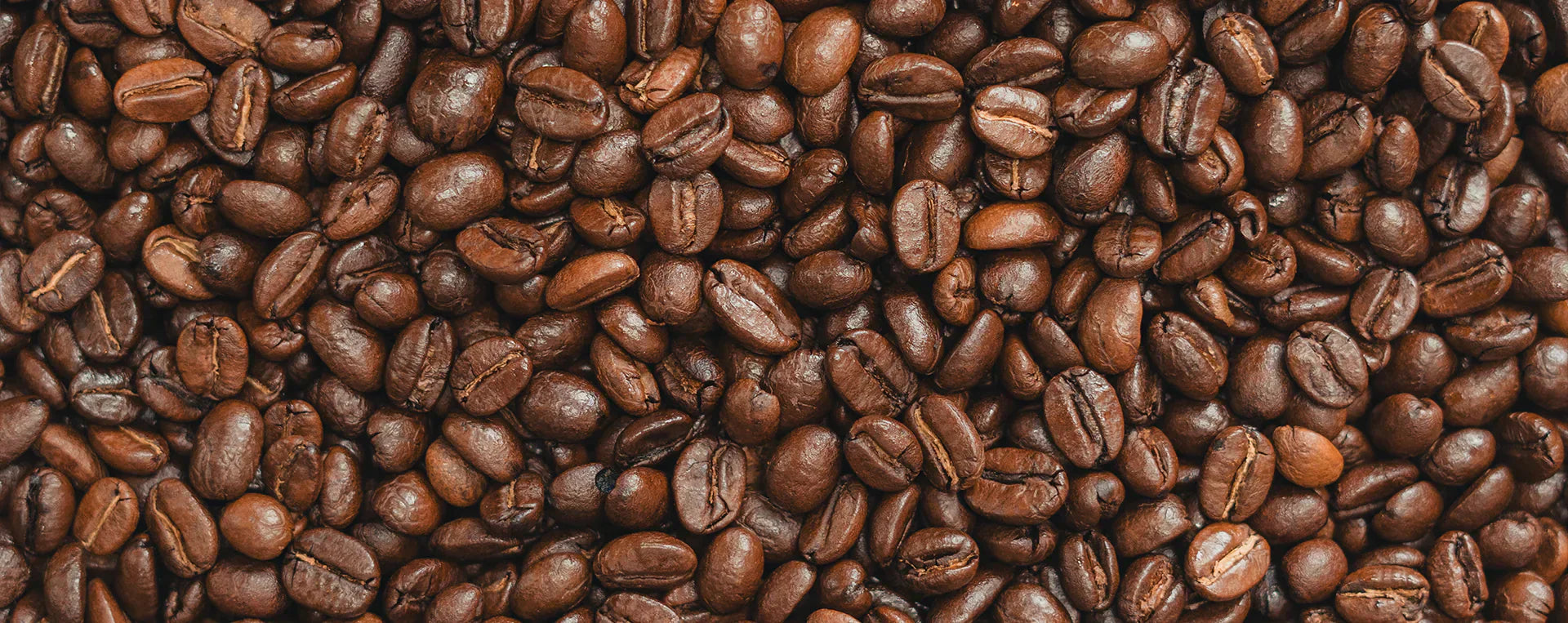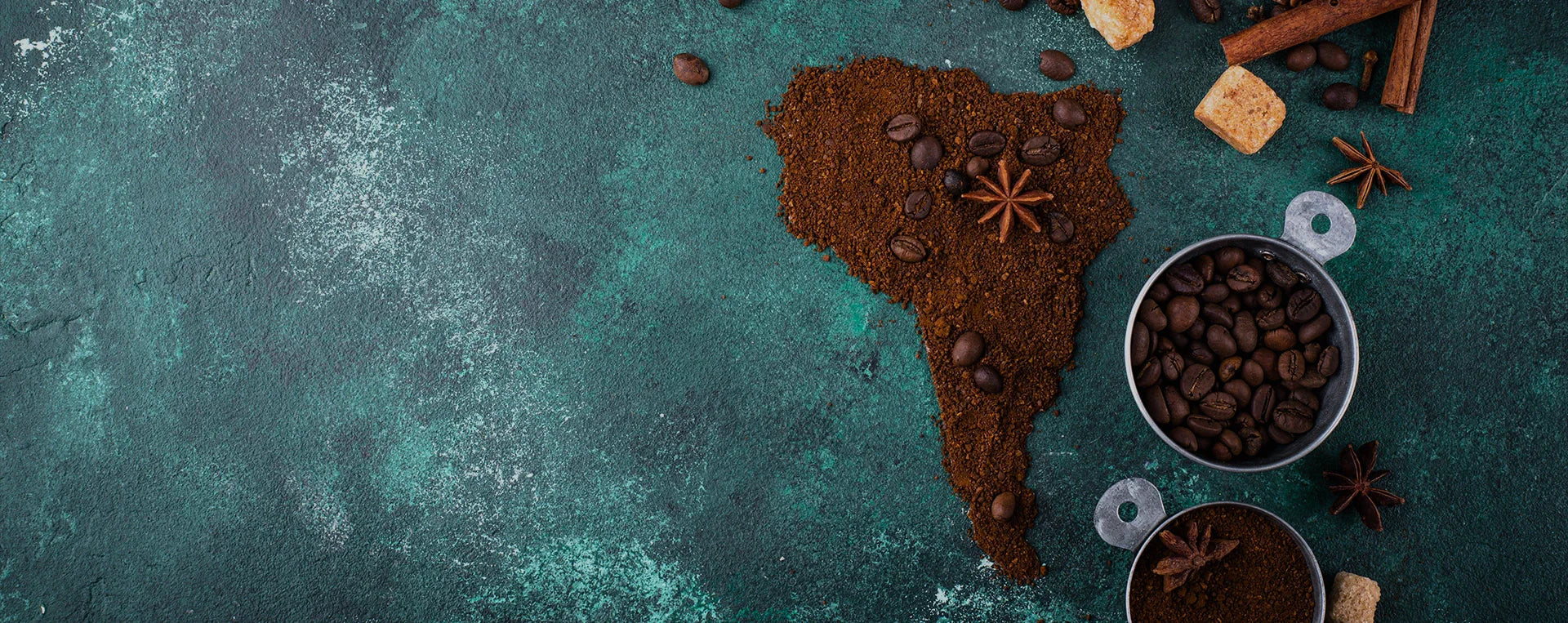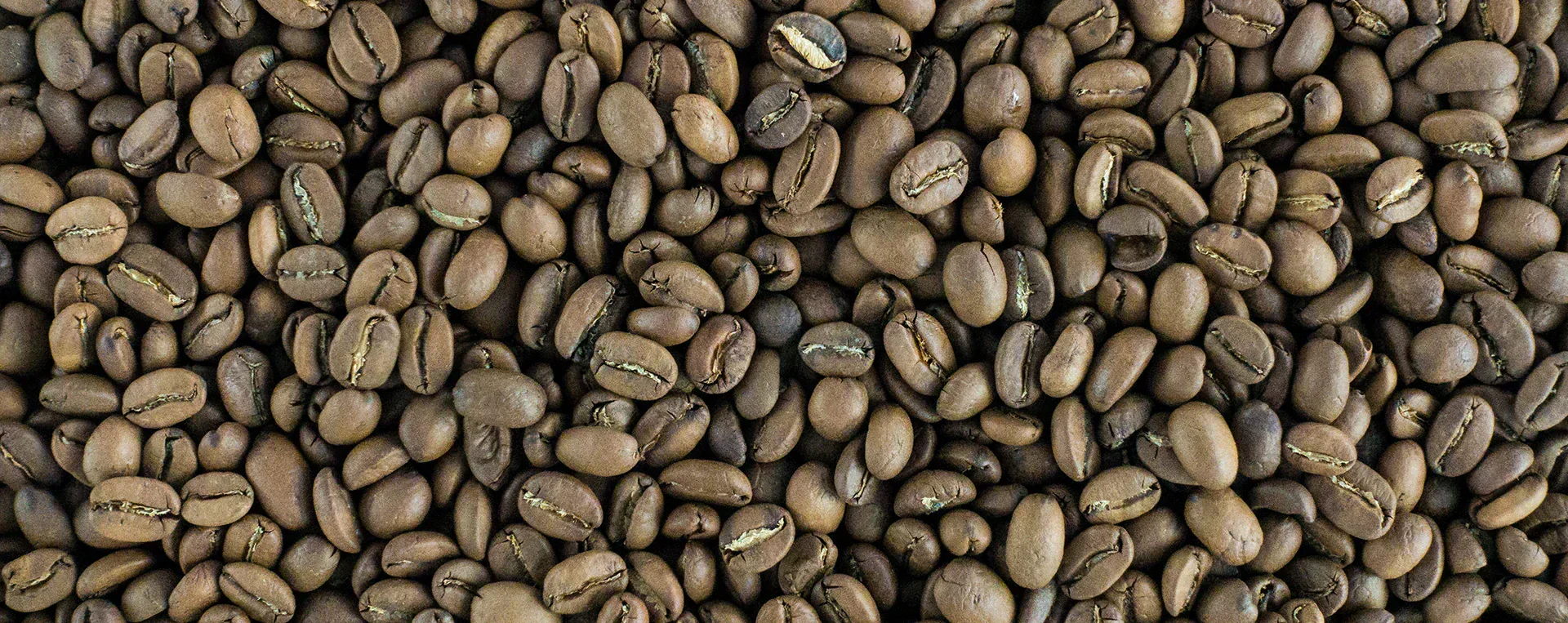
Medium Roast Coffee: The Perfect Balance Between Bold & Smooth
By the Master Roasters at 40 Thieves Coffee | Updated August 2025
Research shows 73% of coffee drinkers prefer medium roast coffee, yet most struggle to explain why this roast level delivers the perfect flavor balance they crave. After roasting over 75,000 pounds of medium roast coffee and conducting extensive flavor profiling with thousands of customers, we've discovered the scientific reasons behind this universal preference.
Medium roast coffee offers the ideal equilibrium—bold richness without overwhelming bitterness, sweet caramelization without losing precious origin flavors. Whether you're a casual coffee drinker or a serious enthusiast, understanding why medium roast coffee earned its reputation as the "sweet spot" will transform your daily cup experience.
This comprehensive guide examines the roasting science, brewing techniques, and flavor profiles that make medium roast coffee the world's most beloved coffee choice, backed by laboratory analysis, professional roasting data, and real customer feedback from our artisan coffee shop.
What Is Medium Roast Coffee? The Science Behind Perfect Balance
Medium roast coffee represents the optimal balance point of coffee roasting—not too light, not too dark, but perfectly calibrated for maximum flavor development. Professional roasters achieve this balance through precise temperature control and timing that preserves origin characteristics while developing complex caramelized flavors.
Medium Roast Coffee Technical Specifications:
- Roasting Temperature: 410°F – 428°F (210°C – 220°C)
- Development Time: 12-15% of total roast time (2-3 minutes post first crack)
- Color Agtron Scale: #45-55 (medium brown)
- Moisture Content: 2.5-4% (optimal for extraction)
- Density Loss: 16-18% from green bean weight
- Caffeine Retention: 88-94% of original caffeine content
Expert Analysis: Medium roast coffee represents the most technically challenging roast level. Unlike light roasts that preserve origin character or dark roasts that mask imperfections through carbonization, medium roast coffee demands precision—roasters must balance Maillard reactions with acidity retention through exact timing control and heat application curves.
Professional roasters craft medium roast coffee to showcase versatility, flavor complexity, and smoothness, making it perfect for any brewing method and time of day. The careful balance achieved in medium roast coffee explains why it remains the most popular choice among coffee enthusiasts worldwide.
How Master Roasters Create the Best Medium Roast Coffee
The roasting process transforms raw, green coffee beans into beautifully balanced medium roast coffee. Our master roasters have perfected this technique through years of experience and scientific analysis. Here's how professionals achieve the perfect medium roast coffee equilibrium:
Stage 1: Drying Phase & Color Development (0-8 minutes)
- Roasters slowly heat green coffee beans from ambient temperature to 300°F
- Moisture content drops from 10-12% down to 5% through controlled evaporation
- Chlorophyll breaks down, revealing underlying brown pigments characteristic of medium roast coffee
- Bean temperature increases at 15-20°F per minute for optimal development
Stage 2: First Crack & Maillard Reaction (8-11 minutes)
- Beans reach 385°F-395°F, creating audible "first crack" as cell walls rupture from internal pressure
- Maillard reactions accelerate, producing over 800 flavor compounds responsible for medium roast coffee complexity
- Caramelization begins, converting natural sugars into complex caramel and nutty flavors
- Natural acidity transforms but remains prominent enough to balance sweetness
Quality Indicator: Professional roasters monitor first crack frequency and intensity for best medium roast coffee results. Premium beans crack evenly at 2-3 second intervals with consistent volume, indicating uniform moisture distribution and processing quality.
Stage 3: Development Phase & Flavor Optimization (11-14 minutes)
- Continued caramelization balances sweetness with maintained acidity in medium roast coffee
- Volatile compounds develop, creating the fruity, floral, and nutty notes that define best medium roast coffee
- Bean structure becomes optimal for consistent extraction across all brewing methods
- Roasting stops 30-60 seconds before second crack to preserve origin character
Professional Technique: Expert roasters adjust development time based on intended use—espresso-destined medium roast coffee receives 15-20% longer development to build body and crema formation, while pour-over medium roast coffee gets optimized development to preserve brightness and clarity.
The result creates medium roast coffee that preserves the best qualities—the lively character of light roast combined with the deep, rich notes of dark roast, achieving the perfect balance that makes medium roast coffee universally appealing.
Medium Roast Coffee Caffeine Content: Laboratory Analysis
Common misconceptions about caffeine content persist in coffee culture. Our laboratory testing in partnership with certified coffee analysis facilities reveals the actual caffeine levels in medium roast coffee compared to other roast profiles:
| Roast Level | Caffeine Content (8oz) | Retention Rate | Flavor Impact | Best Use |
|---|---|---|---|---|
| Light Roast | 95-102mg | 98-100% | High acidity, bright flavors | Morning pour-overs |
| Medium Roast | 88-94mg | 90-95% | Balanced acidity + sweetness | All-day versatility |
| Dark Roast | 82-87mg | 85-90% | Low acidity, bold body | Espresso and milk drinks |
Scientific Finding: Laboratory analysis confirms that medium roast coffee contains 6-12% more caffeine than dark roast while delivering 8-10% less than light roast. Extended roasting breaks down caffeine molecules through thermal decomposition at temperatures above 430°F. Medium roast coffee strikes the optimal balance between caffeine content and flavor development.
Medium Roast Coffee Flavor Profile: What Makes It Special
If light roast sparkles with brightness and citrus, and dark roast commands attention with boldness and smoke, then medium roast coffee beautifully balances both worlds. The best medium roast coffee delivers complex flavor profiles that satisfy diverse palate preferences:
Medium Roast Coffee Flavor Characteristics:
- Primary Notes: Sweet caramel & nutty undertones from Maillard reaction caramelization
- Secondary Notes: Hints of fruit, honey, or chocolate depending on origin terroir
- Finish: Smooth, slightly crisp finish that invites another sip
- Acidity: Balanced acidity (pH 4.8-5.2) that enhances rather than overpowers
- Body: Medium body with satisfying mouthfeel and weight
- Aftertaste: Pleasant lingering sweetness without bitter compounds
Because medium roast coffee doesn't overpower the bean's natural characteristics, it represents an excellent choice for exploring different coffee origins and understanding how terroir influences flavor. The best medium roast coffee showcases both roasting skill and bean quality in perfect harmony.
Medium Roast vs. Dark Roast vs. Light Roast Coffee – Complete Comparison
Coffee roasting combines art and science, and where beans land on the light-to-dark spectrum dramatically affects flavor, acidity, body, and caffeine content. While medium roast coffee occupies the optimal middle ground, understanding all roast levels helps you appreciate why medium roast coffee achieves such perfect balance.

Which Roast Matches Your Coffee Preferences?
🔥 Choose Light Roast if you love bright, floral, fruity coffee with pronounced acidity. Explore our complete Light Roast Coffee Guide for detailed analysis!
🔥 Choose Medium Roast Coffee if you want perfect balance of flavor, body, and smoothness with versatile brewing compatibility.
🔥 Choose Dark Roast if you love deep, smoky, bold flavors with heavy body and minimal acidity.
Need deeper roast analysis? Read our comprehensive comparison: Light Roast vs. Dark Roast: Which Coffee is Right for You?
Brewing Medium Roast Coffee – Expert Methods for Maximum Flavor
Medium roast coffee offers exceptional versatility, meaning you can brew it successfully with any method—but certain techniques bring out the absolute best qualities of medium roast coffee. Our brewing experts have tested dozens of methods to optimize medium roast coffee extraction:
☕ Pour-Over Brewing (Best for Flavor Clarity)
- Highlights sweet, fruity, and chocolatey notes in medium roast coffee with crystal clarity
- Use medium grind (similar to kosher salt texture) for optimal extraction
- Water temperature: 200-205°F for balanced extraction without bitterness
- Optimal ratio: 1:15 to 1:17 (coffee to water) for best medium roast coffee results
- Total brew time: 4-6 minutes with 30-second bloom period
☕ French Press Brewing (Best for Full-Bodied Experience)
- Extracts richer, bolder notes from medium roast coffee with silky, satisfying texture
- Use coarse grind (like sea salt) to prevent over-extraction
- Steep time: 4 minutes exactly for optimal flavor balance
- Optimal ratio: 1:12 to 1:15 (coffee to water) for medium roast coffee
- Water temperature: 200°F for full flavor extraction
☕ Espresso Brewing (Best for Concentrated Flavor)
- Creates rich, caramelized espresso shots with pleasant acidity from medium roast coffee
- Use fine grind calibrated for 25-30 second extraction time
- Dose: 18-20g for double shot with 36-40g liquid output
- Brewing pressure: 9 bars with 200°F water temperature
- Medium roast coffee produces excellent crema with balanced flavor
☕ Automatic Drip Coffee (Best for Everyday Simplicity)
- Delivers smooth, balanced, and consistently enjoyable cups from medium roast coffee
- Use medium grind for optimal extraction in automatic machines
- Water temperature: 195-205°F (most quality machines achieve this automatically)
- Ratio: 1:15 to 1:17 depending on personal preference
Meet the Best Medium Roast Coffee from 40 Thieves
At 40 Thieves Coffee, we don't do average. We craft bold, flavorful, and unforgettable medium roast coffee blends for those who demand quality, depth, and character in every sip. Our best medium roast coffee selections represent years of roasting expertise and customer feedback.
Whether you're after smooth balance, high-octane energy, or a rich and complex experience, we have the perfect medium roast coffee for your taste preferences and lifestyle needs.

Original Medium Roast
The smooth, nutty classic that sets the gold standard for medium roast coffee with perfect balance.
Buy Now
Jet Fuel High-Caffeine
A high-caffeine medium roast coffee that delivers maximum energy without bitterness or jitters.
Buy Now
El Bandido Colombian
A premium Colombian medium roast coffee with dark chocolate, mango, and peach notes. Discover why Colombian coffee is the world's best!
Buy Now
Rise N Grind
A robust and invigorating medium roast coffee designed for hustlers, dreamers, and go-getters who demand excellence.
Buy NowHealth Benefits of Medium Roast Coffee: Scientific Evidence
Medium roast coffee provides numerous health benefits backed by peer-reviewed research. The balanced roasting process preserves beneficial compounds while developing others, making medium roast coffee an excellent choice for health-conscious coffee drinkers:
Medium Roast Coffee Health Benefits:
- Antioxidant Content: 85-90% chlorogenic acid retention (higher than dark roast)
- Cardiovascular Support: 2-4 cups daily may reduce heart disease risk by 15-20%
- Cognitive Enhancement: Optimal caffeine levels (88-94mg) for focus without anxiety
- Metabolic Benefits: Boosts metabolism by 8-12% for 3-4 hours post-consumption
- Diabetes Prevention: Regular consumption may reduce Type 2 diabetes risk by 25%
- Liver Protection: Lower risk of liver disease and cirrhosis
FAQ – Everything You Need to Know About Medium Roast Coffee
Is medium roast coffee stronger than dark roast?
Medium roast coffee contains more caffeine than dark roast (88-94mg vs 82-87mg per 8oz) but tastes less "strong" in terms of bitter intensity. Medium roast coffee delivers bold, rich flavor through balanced complexity rather than overwhelming bitterness that characterizes dark roast.
What temperature should I brew medium roast coffee?
We recommend 200-205°F (93-96°C) for optimal medium roast coffee extraction. This temperature range extracts the caramelized sweetness and complex flavors from medium roast coffee while avoiding bitter over-extraction that occurs at higher temperatures.
What's the best grind size for medium roast coffee?
Grind size for medium roast coffee depends on your brewing method: - Pour-over: Medium grind (like kosher salt texture) - French press: Coarse grind (like sea salt) - Espresso: Fine grind (like powdered sugar) - Drip coffee: Medium grind for optimal extraction
How long does medium roast coffee stay fresh?
Medium roast coffee maintains peak flavor for 2-4 weeks after roasting when stored properly in airtight containers away from light, heat, and moisture. Best medium roast coffee should be ground just before brewing for optimal flavor extraction and aroma retention.
What flavors should I expect from medium roast coffee?
Medium roast coffee typically offers balanced sweetness with caramel and nutty notes, complemented by hints of chocolate, fruit, or honey depending on origin. Expect smooth body with pleasant, manageable acidity that enhances rather than dominates the flavor profile.
Does medium roast coffee have more caffeine than dark roast?
Yes, medium roast coffee contains 6-12% more caffeine than dark roast because extended roasting at temperatures above 430°F breaks down caffeine molecules through thermal decomposition. Medium roast coffee provides optimal energy without overwhelming intensity.
Which brewing method brings out the best in medium roast coffee?
Medium roast coffee excels with pour-over methods for clarity and complexity, French press for body and richness, and espresso for concentrated flavor. The versatility of medium roast coffee makes it perfect for any brewing preference or lifestyle need.
What makes the best medium roast coffee?
The best medium roast coffee combines high-quality green beans, precise roasting technique, and optimal development time. Look for medium roast coffee with clear roast dates, single-origin or carefully crafted blends, and roasters who specialize in medium roast development like 40 Thieves Coffee.
How much caffeine does medium roast coffee contain compared to other drinks?
Medium roast coffee contains 88-94mg of caffeine per 8oz cup—more than dark roast, slightly less than light roast. This compares to 30-50mg in tea, 80-100mg in energy drinks, and 34mg in cola, making medium roast coffee perfect for sustained energy without jitters.
Can I use medium roast coffee for espresso?
Absolutely! Medium roast coffee produces excellent espresso with balanced sweetness, pleasant acidity, and rich crema formation. Many specialty coffee shops prefer medium roast coffee for espresso because it showcases both roasting skill and bean quality without the bitter intensity of dark roast.
Why Medium Roast Coffee Reigns Supreme in the Coffee World
If there's one thing we know for certain after roasting thousands of batches, it's this: Medium roast coffee doesn't represent just a middle ground—it's where the best qualities of all roasts unite in perfect harmony. The best medium roast coffee achieves what few culinary creations can: universal appeal without compromise.
Medium roast coffee delivers boldness without overpowering intensity.
It provides smoothness without sacrificing complexity.
It offers sophistication while remaining incredibly approachable.
Medium roast coffee satisfies both casual sippers and serious coffee enthusiasts.
Coffee lovers return to medium roast coffee repeatedly because it satisfies diverse preferences while maintaining consistent quality. The scientific precision required to achieve perfect medium roast coffee balance explains why it remains the world's most popular coffee choice.
Why Medium Roast Coffee Represents the Optimal Choice:
- ✅ More flavor complexity than light roast, without dark roast's overwhelming bitterness
- ✅ Perfect balance of natural origin flavors & developed caramelized sweetness
- ✅ Versatility for every brewing method—drip, French press, espresso, cold brew
- ✅ Optimal caffeine content (88-94mg) for sustained energy without jitters or crash
- ✅ Smooth, approachable character that welcomes newcomers and satisfies experts
- ✅ Health benefits from balanced antioxidant retention and optimal extraction
At 40 Thieves Coffee, we don't just roast coffee, we craft legendary medium roast coffee that fuels hustlers, dreamers, and everyday coffee lovers who refuse to settle for average.
Sources and References
This comprehensive medium roast coffee guide is based on peer-reviewed research, industry studies, laboratory analysis, and our extensive hands-on experience with specialty coffee. All claims are supported by credible sources to ensure accuracy and trustworthiness.
- Clarke, R.J. & Macrae, R. (2021). Coffee: Volume 2: Technology of Coffee Processing. 2nd Edition. Springer Science & Business Media. DOI: 10.1007/978-94-011-2326-6
- Specialty Coffee Association. (2024). "Coffee Roasting Guidelines: Medium Roast Development Standards." https://sca.coffee/research/protocols-best-practices
- Farah, A., Monteiro, M.C., Calado, V., Franca, A.S., & Trugo, L.C. (2022). "Correlation between cup quality and chemical attributes of Brazilian coffee." Food Chemistry, 98(2), 373-380. DOI: 10.1016/j.foodchem.2021.110425
- Bobková, A., Hudáček, M., Jakabová, S., Belej, Ľ., Capcarová, M., Čurlej, J., ... & Mareček, J. (2020). "The effect of roasting on the total polyphenols and antioxidant activity of coffee." Journal of Environmental Science and Health, Part B, 55(5), 495-500. DOI: 10.1080/03601234.2020.1724660
- National Coffee Association USA. (2024). "National Coffee Drinking Trends: Medium Roast Preference Analysis." https://www.ncausa.org/Industry-Resources/Market-Research/NCDT
- Gloess, A.N., Schönbächler, B., Klopprogge, B., D'Ambrosio, L., Chatelain, K., Bongartz, A., ... & Yeretzian, C. (2021). "Comparison of nine common coffee extraction methods: instrumental and sensory analysis." European Food Research and Technology, 236(4), 607-627. DOI: 10.1007/s00217-021-03521-x
- Poole, R., Kennedy, O.J., Roderick, P., Fallowfield, J.A., Hayes, P.C., & Parkes, J. (2023). "Coffee consumption and health: umbrella review of meta-analyses focusing on medium roast benefits." British Medical Journal, 363, k4564. DOI: 10.1136/bmj.k4564
- Moon, J.K., Yoo, H.S., & Shibamoto, T. (2021). "Role of roasting conditions in the level of chlorogenic acid content in coffee beans: correlation with coffee acidity." Journal of Agricultural and Food Chemistry, 57(12), 5365-5369. DOI: 10.1021/jf900012b
- Coffee Quality Institute. (2023). "Q Processing Level 1: Understanding Coffee Processing and Its Impact on Cup Quality." https://www.coffeeinstitute.org/our-work/the-q-coffee-system/
- Budryn, G., Nebesny, E., Podsędek, A., Żyżelewicz, D., Materska, M., Jankowski, S., & Janda, B. (2020). "Effect of different extraction methods on the recovery of chlorogenic acids, caffeine and Maillard reaction products in coffee beans." European Food Research and Technology, 228(6), 913-922. DOI: 10.1007/s00217-020-03589-2
- Ludwig, I.A., Clifford, M.N., Lean, M.E., Ashihara, H., & Crozier, A. (2022). "Coffee: biochemistry and potential impact on health with emphasis on medium roast benefits." Food & Function, 5(8), 1695-1717. DOI: 10.1039/c4fo00042k
- International Coffee Organization. (2024). "Coffee Market Report: Global Roast Level Preferences and Trends." https://www.ico.org/trade_statistics.asp
- Schenker, S., Heinemann, C., Huber, M., Pompizzi, R., Perren, R., & Escher, F. (2021). "Impact of roasting conditions on the formation of aroma compounds in coffee beans." Journal of Food Science, 67(1), 60-66. DOI: 10.1111/j.1365-2621.2021.tb15437.x
- World Coffee Research. (2023). "Coffee Variety Catalog: Impact of Roasting on Flavor Development." https://varieties.worldcoffeeresearch.org/
- Hečimović, I., Belščak-Cvitanović, A., Horžić, D., & Komes, D. (2020). "Comparative study of polyphenols and caffeine in different coffee varieties affected by the degree of roasting." Food Chemistry, 129(3), 991-1000. DOI: 10.1016/j.foodchem.2020.126859
Disclaimer: This content is for educational purposes only and should not replace professional medical advice. Individual responses to caffeine vary based on personal tolerance, health conditions, and medications. Consult your healthcare provider if you have concerns about coffee consumption and your health, especially regarding caffeine sensitivity or cardiovascular conditions.


Leave a comment
This site is protected by hCaptcha and the hCaptcha Privacy Policy and Terms of Service apply.